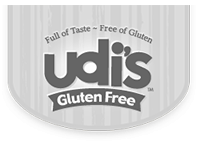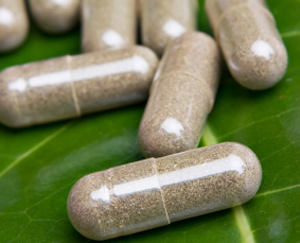Gluten Free
What does following a gluten-free diet mean? That you're embarking on an easy diet with a wide range of health-promoting effects. Instead of dwelling on what you’re giving up, consider that you’re going to enjoy a whole new world of delicious food options to meet your special dietary needs. You’ll be eating seasonally, choosing more fresh fruits and vegetables, focusing on meats, seafood, poultry, legumes, lentils, corn, and rice, and discovering fascinating ancient grains such as quinoa, amaranth, and millet. You’ll be able to eat potatoes, eggs, most cheeses, even chocolate (!)—and enjoy them without guilt because you’ll be taking good care of your body. In fact, you’ll probably end up eating—and feeling—better than ever!
Visit this page for more information about living Gluten Free
---
We carry a large variety of gluten free items, the brands listed below represent just some of the offerings we carry















More Diets
- By Suzanne Dixon, MPH, MS, RD
Overlooked Vitamin Offers Diabetes Protection
Often overlooked, research suggests that vitamin K may be a useful tool to help ward off type 2 diabetes.
People who ate more of both forms of the vitamin—K1 and K2—had lower risk of type 2 diabetes
More than just OK with vitamin K
Researchers collected information on nutrition and health habits from 38,094 adult men and women who were 20 to 70 years old and free of diabetes at the beginning of the study. The researchers classified participants according to the amount of vitamin K in their diet.
- The researchers considered two forms of vitamin K that occur naturally in food.
- Phylloquinone, or vitamin K1, is found in plants, such as kale, collard greens, spinach, Brussels sprouts and other green leafy vegetables.
- Menaquinones, a group of compounds collectively known as vitamin K2, come from animal foods, such as meat, liver, butter, egg yolks, and cheese. Vitamin K2 also is found in fermented foods, such as tempeh and natto, two fermented soy products common in the Japanese diet.
After following this group of men and women for just over ten years, and taking into account other factors that may affect diabetes risk, such as family history, obesity, physical activity levels, and smoking, the study revealed the following:
- Compared with people who ate the least phylloquinone, those who ate the most were 19% less likely to be diagnosed with type 2 diabetes.
- For every 10 mcg per day increase in the intake of menaquinones, the study participants experienced a 7% decrease in their likelihood of being diagnosed with diabetes.
In summary, people who ate more of both forms of the vitamin—K1 and K2—had lower risk of type 2 diabetes.
Upping your K quotient
Many people don’t get enough vitamin K1, the type found in green leafy vegetables. This isn’t surprising given how few of us eat the recommended 5 to 9 servings of vegetables and fruit each day. Use the following tips and tricks to make sure you get all the K you need:
- Go green. Green leafy vegetables are a terrific source of vitamin K. Just one-half cup of cooked kale, collard greens, or spinach provides more than five times the recommended dietary allowance for vitamin K.
- Get creative. If the bitter taste of green leaves turns you off, try sautéing them in a little olive oil with spicy or sweet herbs and spices and a little chopped garlic. This can make greens a tasty treat rather than a dreaded side dish.
- Get souper. Throw green leaves into soups and stews. Add them at the last minute, right before serving, so they are bright and tasty on the table.
- Fight fat phobia. Whether you have your greens raw or cooked, make sure to include a little fat in the meal to aid absorption of vitamin K, a fat-soluble nutrient. Most of us get plenty of fat, but if you’re noshing on a plain spinach salad, have a little dressing with it.
(Diabetes Care 2010; 33:1699–705)












